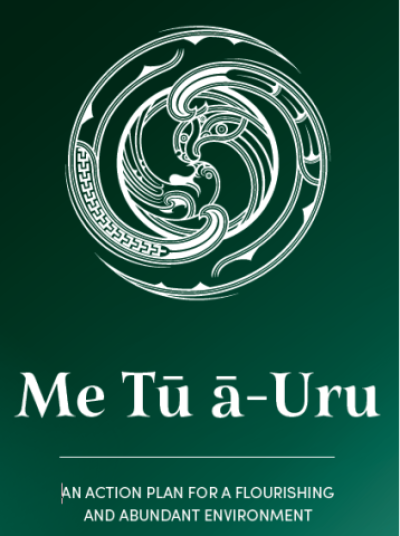Better Protecting the Environment of Aotearoa New Zealand

An Action Plan for better protecting Aotearoa New Zealand's te taiao (the environment that contains and surrounds us) was recently launched at Victoria University Wellington | Te Herenga Waka.
The Plan was developed over a two-year period by New Zealand’s Biological Heritage National Science Challenge, Adaptive Governance and Policy Working Group that includes CERN member Maria Bargh (Te Arawa, Ngāti Awa), Professor of Politics and Māori Studies at Te Herenga Waka.
The title of the Action Plan Me Tū ā-Uru is based on the whakatāuki (proverb) ‘Me Uru Kahikatea’ which symbolises strength of unity, and encapsulates the action plan’s vision of people being united in right relationships to each other and the environment.
This vision is reflected in the Action Plan’s relational framework which has four themes, Whanaungatanga (relationships), Utu (balance and reciprocity), Mātauranga (knowledge and ways of seeing), and Mana and Rangatiratanga (authority with care).
Under each of these themes, there are case studies that feature Māori-led or partnership-based projects that are restoring environments, bringing people together, feeding hapū (clans or descent groups) and whānau (extended families), increasing knowledge, and providing facilities and natural spaces for tangata whenua (people of the land, Māori) and tangata Tiriti (or people of the Te Tiriti o Waitangi | the Treaty of Waitangi, non-Māori).
The case studies include that of Otama Marere a Māori trust that manages a 45-hectare site at Rangiiwaho at Paengaroa in the Bay of Plenty on whenua (land) what had once been a wetland but had been drained, occupied and leased on minimal rent to a local golf club. On return to the tangata whenua a trust was established to care for people and the land, and alongside wetland restoration the trust now operates a thriving organic kiwifruit and avocado orchard that provides economic support for members of the trust.
In terms of a partnership-based projects, case studies that of the Crown’s 2020 Te Mana o te Taiao, a 30-year biodiversity strategy for Aotearoa New Zealand which makes tentative steps towards equal sharing of power and giving effect to rights under Te Tiriti by specifying that a te ao Māori perspective should be embedded in environmental governance and that environmental values should be prioritised in economic decision-making.
The Action Plan arose out of recognition that Aotearoa’s environmental and social relationships are out of balance and that there is an enormous challenge posed by inter-related crises including climate change, biodiversity decline, poverty and homelessness.
While the plan details harm to te taiao, it also emphasises ways forward for reconnecting and restoring relationships between tangata whenua, tangata Tiriti, the Crown, and Papatūānuku (the land), and the written Action Plan and associated website outline tangible steps that groups can take to rebuild these relationships.
Professor Maria Bargh also recently delivered her professorial lecture in which she relates four stories that illustrate the intricacies of Māori political traditions, decision-making and activism and that challenge the common refrain of people ‘not knowing’ the political history, a refrain that undermines the exercise of Māori tino rangatiratanga (self-determination).
Jenny Cameron
